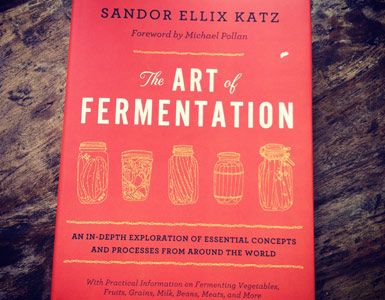Fermentation is an age-old practice that has gained renewed interest in recent years. This process, which involves the transformation of food through the action of microorganisms, offers numerous health benefits and a rich array of flavors. Here, we delve into the benefits and techniques of fermentation, showcasing its significance in the culinary world.
Health Benefits of Fermentation
- Improved Digestion: Fermented foods contain beneficial probiotics that aid in digestion by promoting a healthy balance of gut bacteria. This can help alleviate digestive issues such as bloating, gas, and constipation.
- Enhanced Nutrient Absorption: The fermentation process breaks down complex food molecules, making nutrients more bioavailable. This means the body can absorb vitamins and minerals more efficiently.
- Boosted Immune System: The probiotics found in fermented foods can enhance immune function by supporting the gut’s role in the immune response. A healthy gut flora can protect against harmful pathogens.
- Detoxification: Fermented foods can help detoxify the body by breaking down toxins and harmful substances. This is particularly true for foods like fermented soy products, which can help neutralize anti-nutrients.
- Reduced Food Spoilage: Fermentation acts as a natural preservative, extending the shelf life of food by inhibiting the growth of harmful bacteria.
Popular Fermentation Techniques
- Lacto-Fermentation: This technique involves using lactic acid bacteria to ferment vegetables and dairy products. Common examples include sauerkraut, kimchi, and yogurt. The process typically involves submerging food in a saltwater brine to encourage the growth of beneficial bacteria.
- Alcohol Fermentation: Used to produce alcoholic beverages like beer, wine, and spirits, this method involves yeast converting sugars into alcohol and carbon dioxide. It requires precise control of temperature and sugar levels to achieve the desired flavor and alcohol content.
- Acetic Acid Fermentation: This process converts alcohol into acetic acid, producing vinegar. It involves exposing alcoholic liquids to air, allowing acetic acid bacteria to thrive and create vinegar’s distinct sour taste.
- Koji Fermentation: Originating in Japan, this technique uses the mold Aspergillus oryzae to ferment soybeans and grains. It is essential in producing soy sauce, miso, and sake. The mold breaks down complex carbohydrates and proteins, resulting in rich, umami flavors.
- SCOBY Fermentation: A Symbiotic Culture Of Bacteria and Yeast (SCOBY) is used to ferment tea into kombucha. The SCOBY consumes sugar in the tea, producing a tangy, effervescent drink rich in probiotics and organic acids.
Tips for Successful Fermentation
- Use Fresh Ingredients: Starting with high-quality, fresh ingredients ensures a successful fermentation process and better-tasting final products.
- Maintain Cleanliness: Sterilize all equipment and containers to prevent contamination by unwanted bacteria or mold.
- Control Temperature: Most fermentation processes require a stable, moderate temperature range to allow beneficial microorganisms to thrive.
- Monitor pH Levels: Keeping an eye on pH levels can help you track the progress of fermentation and ensure the environment remains conducive to beneficial bacteria.
- Experiment with Flavors: Don’t be afraid to try different combinations of ingredients and spices to create unique flavors and textures in your fermented foods.
Conclusion
The art of fermentation is a fascinating blend of science and tradition, offering numerous health benefits and enhancing the culinary experience. By understanding and mastering various fermentation techniques, you can create delicious, nutritious, and long-lasting foods that contribute to overall well-being. Whether you’re making kimchi in your kitchen or crafting a fine wine, fermentation opens up a world of possibilities for food enthusiasts and health-conscious individuals alike.


